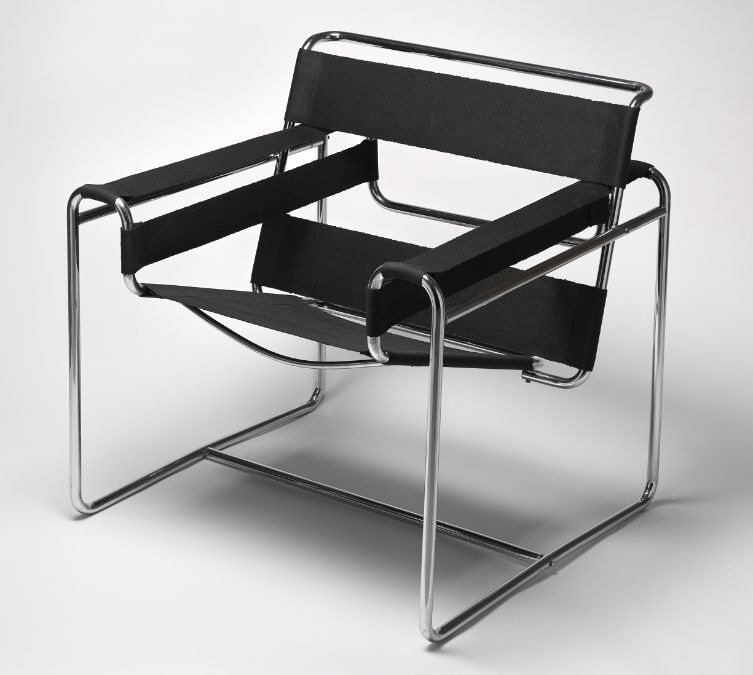Since I don't have the time or money to go visit all the many interesting design and furniture shows around the world, I content myself with gazing at the products shown on the exhibitions' websites. While shows like Maison & Objet rightfully get a lot of attention, others have intriguing products, too.
Tent London is part of the London Design Festival, which runs from Sept. 22-25. One of the companies exhibiting there is Slåke with its Saddle chair, designed by Christoffer Angell, Øyvind Wyller and Simen Aarseth.
The arm cushions have pockets where the end user can stash a magazine, a remote control or something of a similar size; that can certainly come in handy. And the chair looks lovely, unlike those with separate chair armrest organizers.
Another eye-catching item from Tent London was the dwiss, for kitchen recycling; it was designed by Paul Timmer. With four compartments, two on top and two on the bottom, recyclables can be divided up however the end user's locale requires.
There's a removable bin in one of the top sections to accommodate compostables.
One possible drawback to this design: Because the dwiss is made from beech plywood rather than something like plastic, the end user needs to avoid having standing water in any of the compartments. People are sometimes careless with their garbage cans and recycling bins; consumers who know this could possibly be an issue in their households should look elsewhere.
A third interesting item from Tent London is the bike hanger from Cactus Tongue. Bikes with a horizontal or slightly sloping crossbar can be hung horizontally; bikes can also be hung vertically by the handlebars or the seat post. It's made from stainless steel and includes leather contact pads. (Extra contact pads can be bought, too, which can come in handy.) It can be used both indoors and outdoors.
This bike hanger is 38 cm (almost 15 inches) deep, which is a bit more than a number of others. While this means it protrudes further from the wall, it also accommodates more bikes (because of the potential for a vertical orientation) than many others. And bikes that are just a bit too large for other hangers might find this one works for them.
Cactus Tongue points out that hanging the bike by the handlebars can be useful when the end users wants to work on the bike.
100% Design runs in London from Sept. 21-24, and that show's website is where I discovered the Swich wireless charging stand from Lutman Design Studio. The stand uses Qi wireless charging technology which iPhones currently do not support, but there are easy workarounds using a charging card or a charging case. (The Swich website sells some of those charging cases.)
Swich allows end users to easily use their phones while the phones are charging. It uses microsuction tape to hold the phone to the stand; the "tiny micro suction cups" are supposedly good for holding "the smooth back of mobile phones." However, this might mean the stand doesn't work so well for phones in cases that don't provide that smooth back.
The other show that caught my eye was the Stockholm Furniture and Light Fair, held back in February. Karl Andersson & Söner featured its Svall magazine shelf, which comes in multiple lengths and in both a horizontal and vertical orientation. It's a nice way to keep magazines out and visible so they (hopefully) don't get neglected.
In the horizontal orientation, the curved slots help keep magazines upright. However, some end users may have oversized magazines which don't fit into those slots.
Piniwini is an older product from the same company; it has a small shelf (invisible while in use) that makes it appear that the books (or whatever) are balanced on the peg.
While it's an interesting look, I'm not sure how practical it would be for many end users. I'm sure I'm not the only one who would be afraid of knocking the books off that tiny shelf.
Maze Interior was another company at the Stockholm Fair, and the F-Shelf designed by Kent Johansson was one of the products featured. It's a nice wall-mounted option for rooms with no space for a nightstand. End users can get the shelf in either of two orientations, depending on which side of the bed they are placing it and which orientation they prefer.
But both orientations present some challenges. If the shelves are both easy to reach, putting a book back in place could be a stretch. And if it's easier to put the book back, the lower shelf is a bit tricky to reach.
Maze also has the Step S shoe shelf, designed by Gustav Rosén. These are flat platforms for the shoes; a simple solid shelf might work just as well, if not better, in some situations. But it's a small piece that can fit into little niches, where getting the right-sized shelf might be challenging for end users who don't want to make their own. And it can be combined in a series to create the illusion of a single longer piece.
Mifune Design Studio was also at the Stockholm fair, and the piece that caught my eye was the versatile S hanger. It can be used with or without the hangers, and unused hangers can be stacked around the hanger-shaped base. It might not be the most stable piece, though; end users with large rambunctious dogs could possibly have problems with this one.
![]()






































































